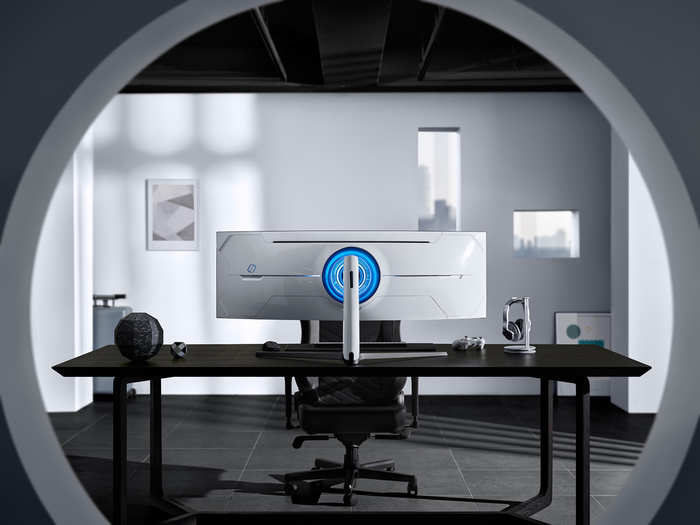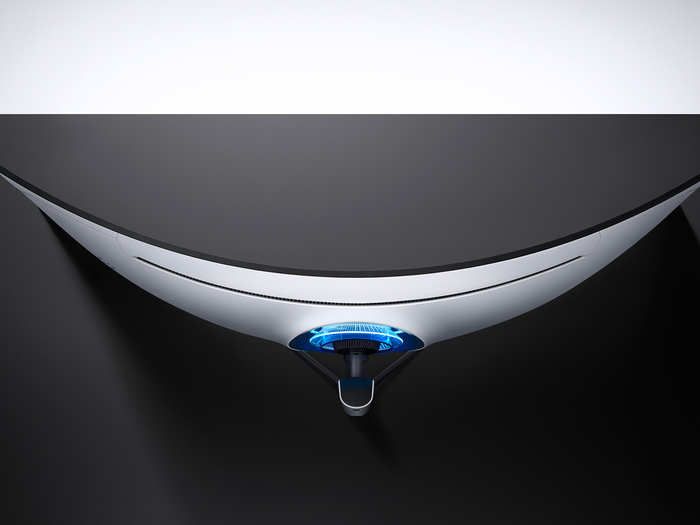- Home
- slideshows
- miscellaneous
- Samsung made a super-ultrawide monitor that even the most powerful gaming PC probably can't keep up with
Samsung made a super-ultrawide monitor that even the most powerful gaming PC probably can't keep up with
Samsung's Odyssey G9 is a 49-inch 5120 x 1440p monitor that's essentially the same thing as if two 24-inch monitors were stuck together.

Games will run incredibly smoothly if you have an incredibly powerful PC and if you dial down your game's graphics settings.

The G9 uses a VA display panel that's well balanced for gaming. It has 1 millisecond input response time that some gamers appreciate for fast-paced games. Combine that with the G9's 240Hz refresh rate that can display games at 240 frames per second (fps), and you have yourself an incredibly quick, smooth, and immersively wide monitor.
With that said, you'd only achieve those 240 fps at 1440p resolution if you have incredible powerful PC hardware, like Intel's 9th-generation Core i7 or i9 processors, and a graphics card like the $1,200 Nvidia RTX 2080Ti.
Even with those specs, it's unlikely that you'll run recent AAA games at their highest graphics settings at 240 fps. My personal PC runs on a Core i7 9700K and a 2080Ti, and I'm getting about 100 fps on "Battlefield V" at "Ultra" graphics settings on a similar 32:9 monitor; the 1440p Samsung CRG9 monitor with a 120Hz refresh rate.
You'll likely need to dial down a recent game's graphics settings quite considerably to get the 240 fps that the G9 is capable of. But you should be able to play some popular older games like "CS:GO" at 240 fps with decent graphics settings.
If you're not planning to play games at 240 fps, there may be little point to consider the G9.
It has a deep "1000R" curvature that's designed for immersion and to let you see the screen's edges more easily with your peripheral vision.

It also supports HDR1000, which basically means it has decent brightness when playing games in HDR.
And if that's still not enough, the G9 supports AMD's FreeSync 2 technology and has Nvidia's GSync compatibility. Basically, those two features prevent screen tearing; where part of the screen seems to lag slightly behind other parts of the screen.
There's no price tag yet, but expect something north of $1,000 when it's released in the second quarter of 2020.

Both the G9's predecessors started above the $1,000 mark, so you can expect something similar for the G9, especially considering that it has higher specs. With all those specs in mind, and considering its size, features, and capabilities, that sounds about right. I'm not saying it's absolutely worth it or something you should buy when it's released, but that's our best guess on the price range.
Quick note about the design: both the G9's predecessors have matte-black color themes. Those are nice, but the G9's glossy white design and glowing blue orb on the back is...well...absolutely stunning, even if gamers will rarely get to see the back after setting it up the first time. Just in case you're wondering, the lighting can be customized with 56 different colors and there are six different lighting effects. Just remember, it's at the back of the monitor.
Popular Right Now
Advertisement